As summer gardens fade and a new season begins, it’s time to think about caring for the hardworking tools that have served us so well. Although cleaning garden tools regularly (preferably after every use) is ideal, tending to trusty blades and spades prior to winter storage will help extend their life and effectiveness.
Leonard Perry, an extension professor at the University of Vermont who specializes in ornamental horticulture, floriculture and herbaceous perennial production, says regular maintenance helps preserve sharp edges on digging tools, prevents rust and removes soil that may have been contaminated by diseased plants. It also means a fresh start come spring.
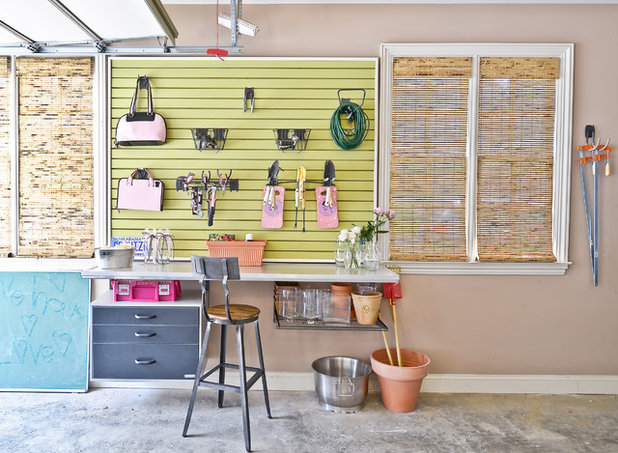
Organized Living
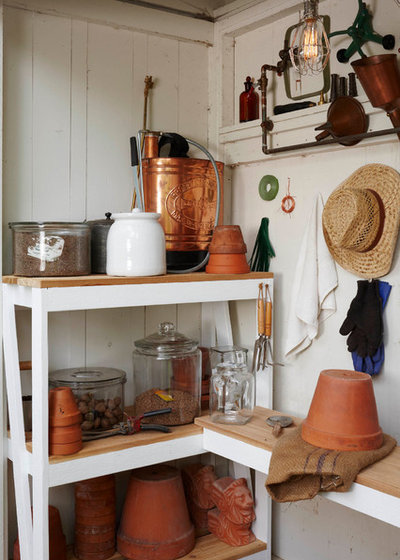
Art | Harrison Interiors & Collection
The Nitty-Gritty“All tools are important to clean, especially those made with metal because of the risk of rust,” says Shirley Bovshow, landscape and edible-garden designer and proprietor of EdenMakers Garden Design. “Tools with moving parts or joints are especially vulnerable because of the crevices that trap dirt and moisture.”
For trowels, spades, shovels and pruners, Bovshow advises the tried-and-true method of first cleaning away dirt and garden debris, then, after mixing motor oil into a 5-gallon bucket filled with sand — just enough to moisten the sand slightly — dipping the tools into the bucket and swirling them around a bit. “The grit of the sand will remove encrusted dirt,” Bovshow says. “And the motor oil will protect the metal from rust.”
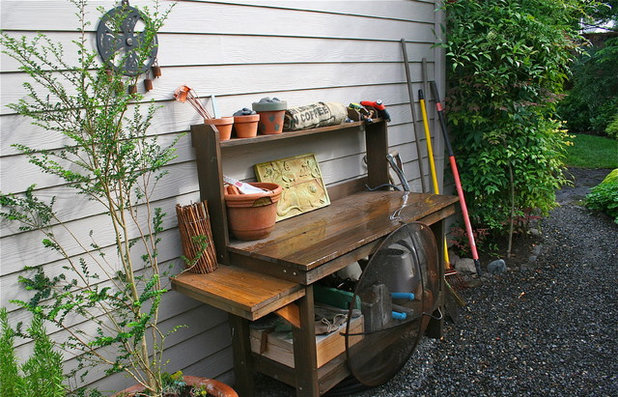
Visionscapes NW Landscape Design
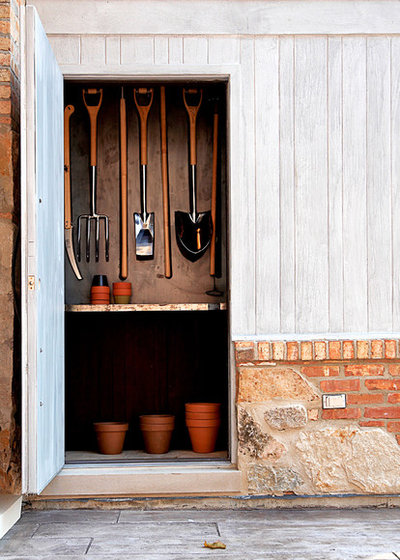
Mark Hickman Homes
The gardening gurus at the National Gardening Association offer an alternative method for deep cleaning: Soak the metal ends of tools in a tub or bucket of hot, soapy water for 10 to 15 minutes, then rinse with water and dry each tool thoroughly. Once dry, use WD-40 to lubricate the metal blades of shears and pruners and the metal heads of other tools and wipe away the excess.
To condition wood handles, the NGA recommends smoothing out rough, splintery spots with medium-grained sandpaper, then rubbing with a small amount of linseed oil. The oil will aid in preserving the wood, reduce splintering and guard against rot.
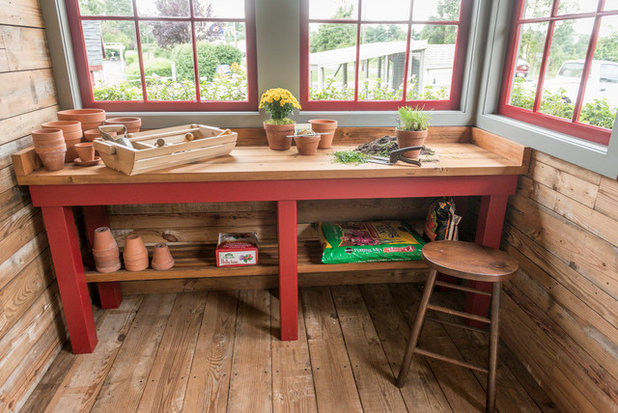
Teracottage-Limited Edition Artisan Sheds & Such
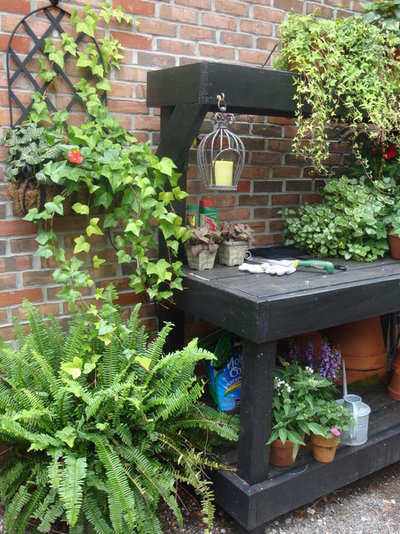
Levell Design
Sanitize Pruners Frequently“Pruners should be sanitized with convenient bleach wipes or sanitizing spray before using them on plants,” Bovshow says. “If you are pruning several plants, pruners should be sanitized in between plants to prevent the spread of diseases and bacteria.”
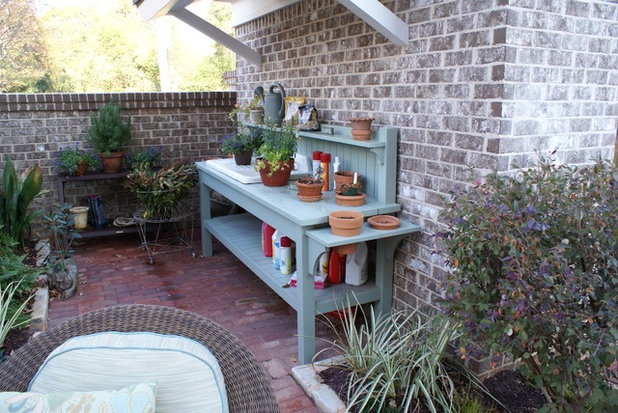
John Bynum
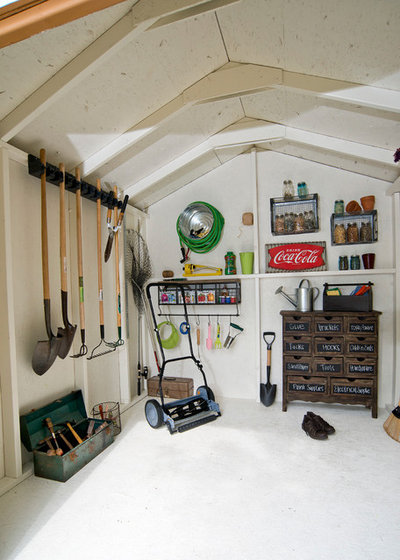
Backyard Buildings
Remove Rust If rust has found its way onto your tools, the NGA suggests scrubbing the area with a bit of steel wool and a dab of Naval Jelly rust dissolver, which should be used only in well-ventilated areas. Rubber or plastic gloves and safety glasses should be worn when using the gel too, because it contains hazardous chemicals.
If this sounds more than a little scary, the gardening association has a second option: Use a stiff wire brush to get off as much rust as you can, then apply a rust-inhibiting primer and paint the tools according to product directions.
Obviously, preventing rust is always Plan A. To do this, keep tools clean, dry and stored away from moisture.
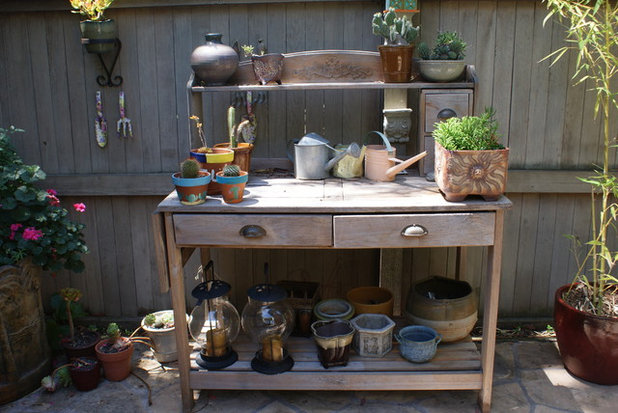
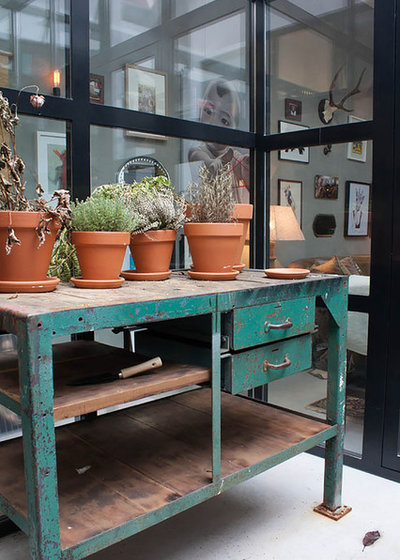
Louise de Miranda
An Ounce of PreventionAvoiding rust can be as easy as wiping off tools with a damp cloth after use, drying them well and coating them lightly with a few drops of a multipurpose oil, such as 3-in-1 oil, on a paper towel.
Dirty trick: Bovshow says an easy way to clean tools after gardening sessions is to wipe down blades and metal equipment with disinfecting bleach wipes. Dry well and store.
“Make sure to have your cleaning materials handy so you don’t have to look for them in the dark after the sun has gone down,” Bovshow says. “If it’s too much effort to find them, you won’t do it.”
See how to clean: Hardwood Floors | Marble Countertops and Tile | Glass Showers | Refrigerators | Carpet | Stainless Steel | Windows





